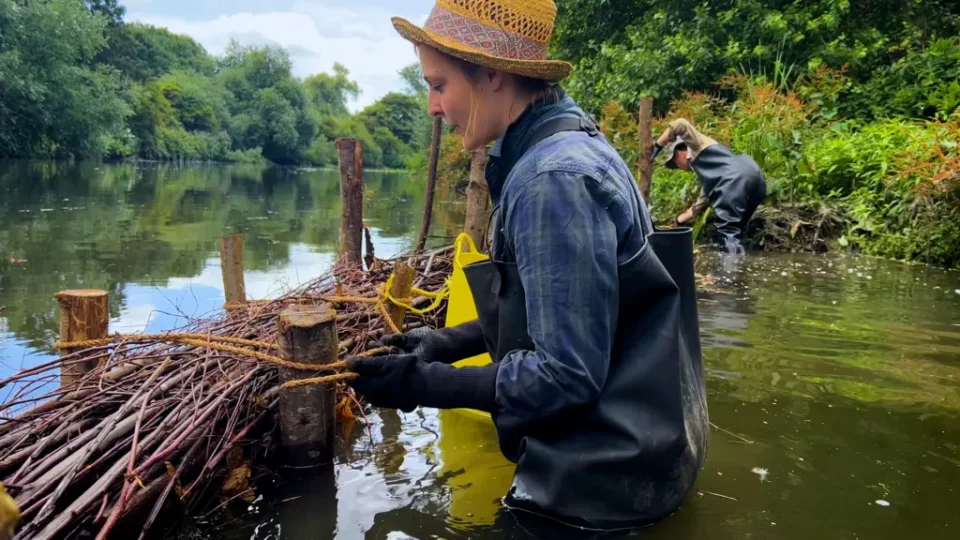Environmental organizations are celebrating a significant achievement in restoring local wildlife to Hackney Marshes in east London, following years of habitat degradation.
Species such as kestrels, weasels, shrews, wood mice, and various small mammals had been gradually vanishing from the River Lea ecosystem until hundreds of volunteers initiated efforts to rebuild these habitats. Their activities included creating log piles, establishing artificial food sources, and selectively pruning trees through a method known as coppicing.
Ian Phillips, an ecologist who has played a crucial role in the river restoration initiative over the past three years, remarked that the transformation felt almost instantaneous. “The way everything fell into place was truly remarkable,” he noted.
The biodiversity project, backed by funding from Hackney Council, the Environment Agency, and the Mayor of London, was carried out by organizations such as ReNature London, the Wildlife Gardeners of Haggerston (WGH), and Save Lea Marshes.
Phillips explained that the urgent need to restore the mammals’ habitats arose when the decline of wood mice triggered a chain reaction that led to the exodus of weasels, which also negatively affected the local kestrel population. “It’s like a classic game of Jenga—removing the wrong element from an ecosystem can lead to a total collapse,” he stated.
Three years ago, the team recognized they had reached a critical juncture and decided to take action.
The decline in local wildlife was attributed to increasing foot traffic from visitors, as well as houseboat residents removing logs for firewood, compounded by the raucous ‘Hackney Beach’ celebrations during the pandemic. Phillips explained that while these gatherings garnered media attention, the noise and log burning were detrimental to local species, causing birds such as kingfishers and little owls to vacate their nests.
The rise in dog ownership during lockdown further exacerbated the situation, with Phillips noting the dire consequences for marsh wildlife. “Just the other day, we saw someone with 16 dogs, and when you have around 3,000 dogs passing through the area daily, it’s bound to result in casualties,” he pointed out.
Gideon Corby, the lead ecologist for the Old Lea River Restoration project, emphasized that this initiative illustrates what can be achieved through local expertise and commitment in collaboration with the council amid a biodiversity crisis.
The rewilding groups are eager to expand their conservation efforts throughout the borough, targeting areas like Millfields Park and London Fields. They are also actively training council staff to aid in the rehabilitation of species across the region.
In addition, Hackney Council has permitted the introduction of other species, including common lizards and slow worms, into the Marshes.


